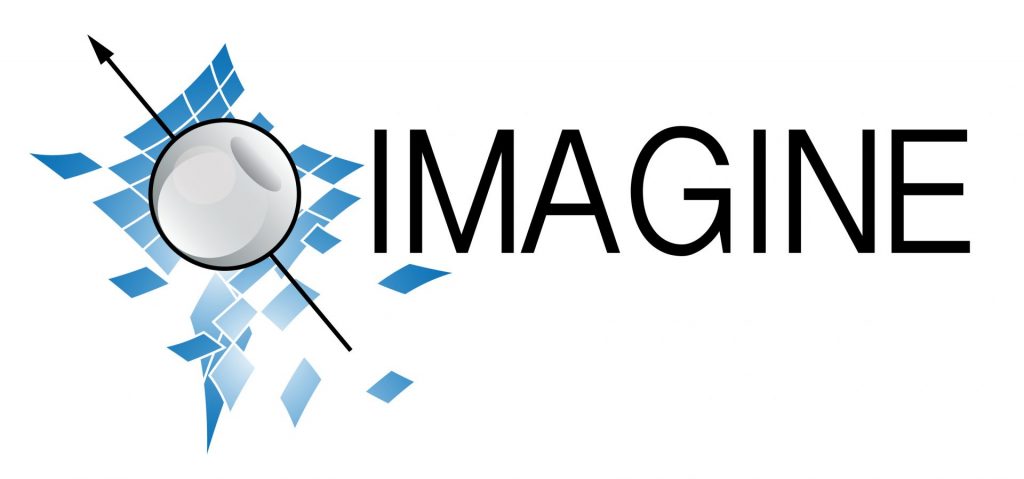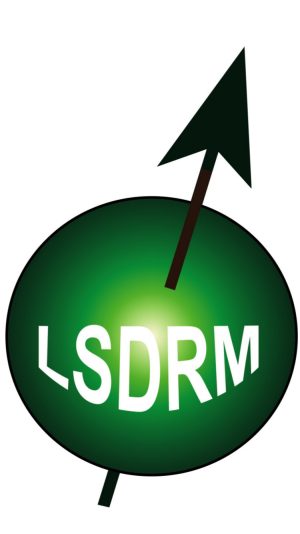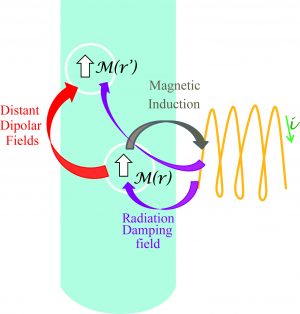ANR-FWF Project: NMR Investigation of MAGnetization-Induced Non-linear Effects
Globally large efforts are dedicated to improve the sensitivity of NMR mainly via two complementary approaches:
- (i) increasing nuclear polarization by ever-increasing magnetic fields or more efficiently by exploiting transiently polarized species
- (ii) improving the detection, in particular through the use of cold probes.
However these developments entail the appearance of new phenomena related to the non-linear evolution of nuclear magnetization in liquid samples (See for instance for a review in this field).
In most cases they result from the intricate combination of:
- (i) the non-linear coupling between the nuclear magnetization and the detection coil (radiation damping)
- (ii) the enhanced contribution of long-range magnetic interactions, not averaged out by the Brownian motion (distant dipolar fields, DDFs).
These effects are actually met in a wide range of other physical systems (such as Bose-Einstein condensates, superfluid 3He, or quantum entangled spin systems).
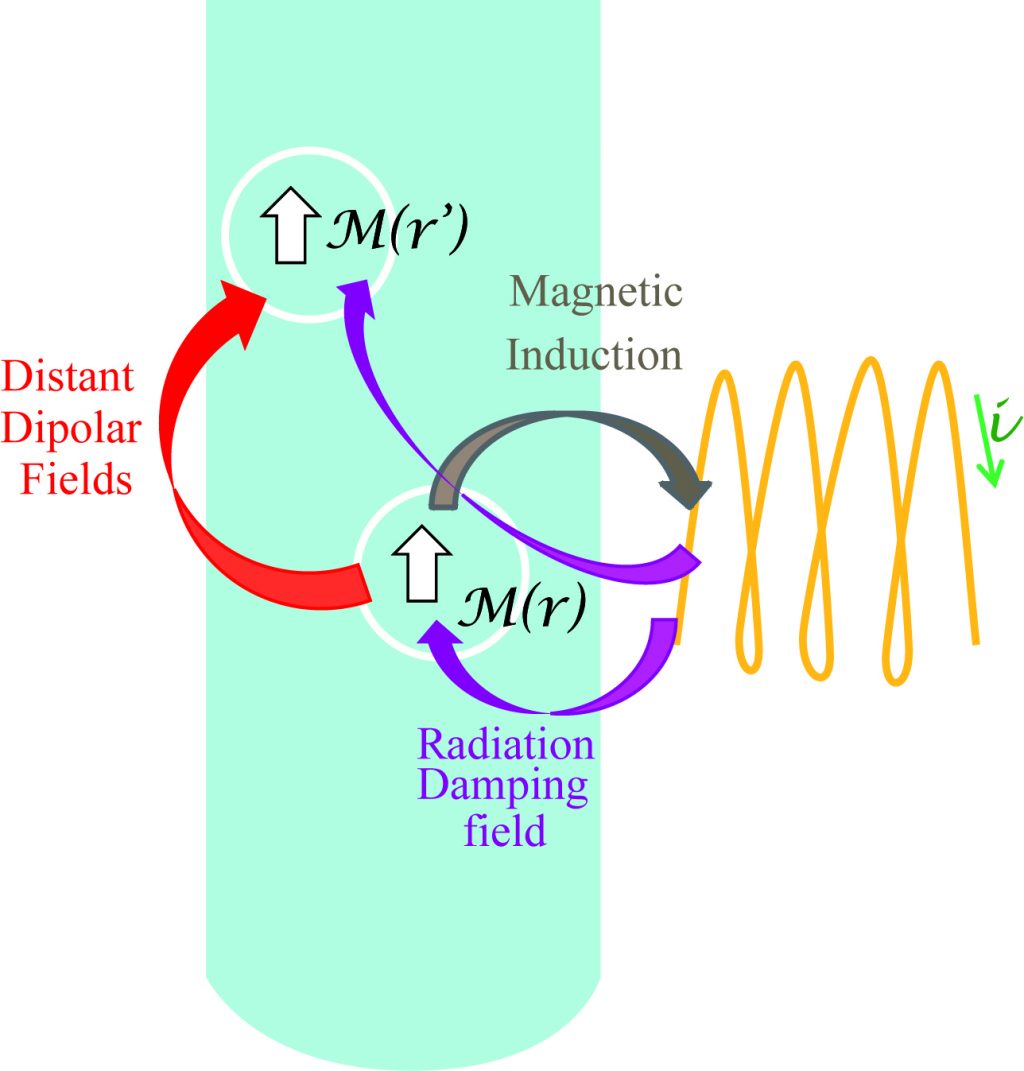
The first aim of this project consists in significantly improving the understanding of these new physical phenomena and their consequences on the NMR observables: for instance deciphering the complex line shapes of nuclear spin-noise spectra acquired with cold probes, explaining the origin of multiple maser emissions, or controlling DDF-induced spin dynamics instabilities through multiple rf-pulses. Such studies will require means to increase and control both the magnetization and its cross-talk with the detection coil. To this end hyperpolarized noble gases or parahydrogen, areas of expertise of IRAMIS and LKB, will be employed whenever possible. Use of cold probes available at JKU as well as development of micro-coils will further lower the detection threshold of NMR, allowing us to induce and study novel effects.

The second major aim of the project is either to find new ways to circumvent the drawbacks resulting from these non-linear effects (such as unreliable suppression of the solvent signals), or to propose new approaches to turn them into advantages. For instance, as the coupling between the magnetization and the coil tremendously enhances the detection sensitivity of spin-noise, the latter is expected to be more sensitive than classical pulse-acquisition schemes for very small numbers of spins. Also, DDFs induced by large magnetization allow new approaches in MRI and localized NMR spectroscopy, thanks to intermolecular multiple-quantum coherences between target molecules and solvent or hyperpolarized species.
The consortium comprises four partners. Three belong to academic institutions and have the leadership in their respective research domains. Two laboratories of IRAMIS are involved, LSDRM for NMR and optical pumping and LICSEN for microfabication. The group of Pr. N. Müller at J. Kepler University in Linz (Austria) contributes with crucial experience in theory and practice of spin-noise phenomena on protons and provides the chemistry background required for the main-stream spectroscopic applications in high resolution NMR. The group of P.J. Nacher (Laboratory Kastler-Brosel, Ecole Normale Supérieure, Paris) specializes in optical pumping techniques and in low field NMR with full control of non-linear effects. The fourth Partner RS2D is a small company offering a-la-carte solutions in NMR spectroscopy and imaging; it will benefit from efficient transfers of knowledge and technologies and will provide hardware solutions to the academic partners for further enhancement of their capabilities to explore and exploit non-linear NMR. The Partners will take advantage of their complementary cultures, know-how and experimental apparatuses to treat various theoretical questions and to propose a variety of experimental applications, of different levels of risk and complexities. At the end of the project, the fundamental understanding of the phenomena arising from non-linear effects will provide a set of novel solutions for long-standing issues of NMR: new technologies to improve sensitivity and selectivity in NMR-spectroscopy and spatial resolution in MR-imaging based on scientifically sound extendable concepts of non-linear spin dynamics.
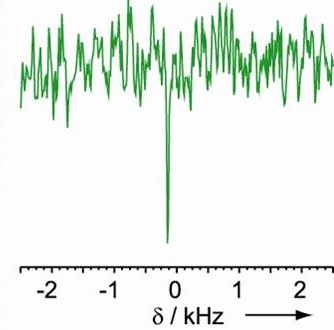
This project follows several previous works performed between only two partners out of the four. We can mention the ANR 2007 project DIPOL between LKB and LSDRM or the bi-national Amadeus project (2010-2011) between N. Müller and H. Desvaux.
The project has officially started for the French teams March 1st, and it will start May 1st in Austria. The kick-off meeting took place March 26th in Saclay.
In the framework of a bilateral collaboration project (Austria-France) and thanks to the WTZ Amadée Award 2013, N. Müller and H. Desvaux organize the 1
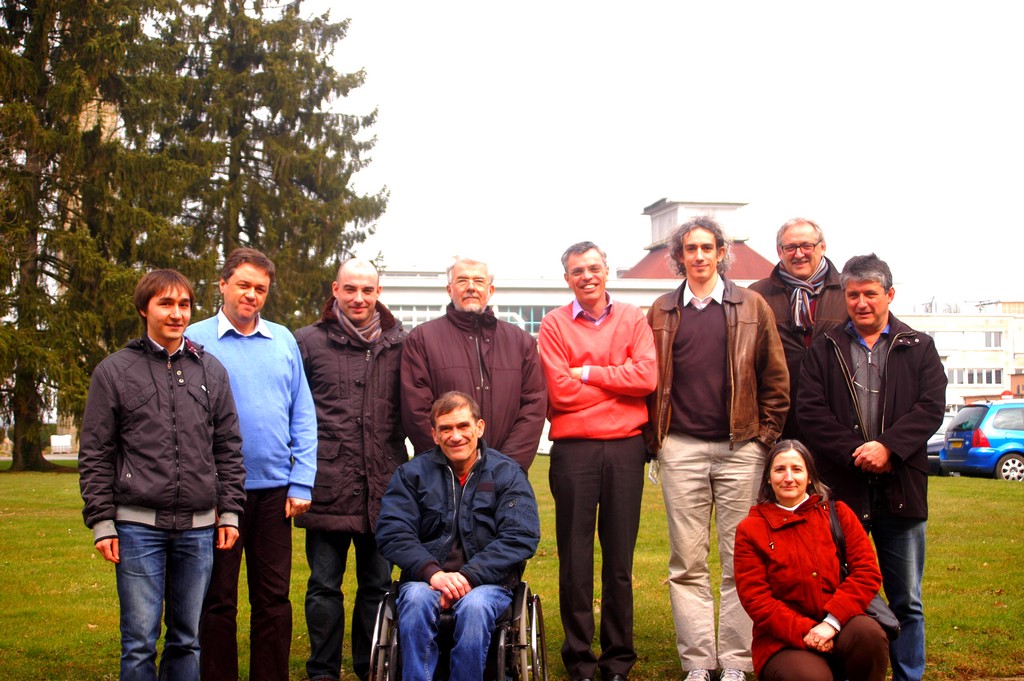
Main results
Several progresses have been performed and recently reported in the litterature.
- In nuclear spin-noise experiment, the first 2d spectrum detected by nuclear spin-noise was reported (link to the publication). By comparing different measurements an unexpected behavior was evidenced which cannot be explained by the current approaches. In particular it appeared that there were three different conditions for optimal tuning a high-resolution NMR probe. The recently published article was highlighted in SpectroscopyNow. Several developments (theory, simulations and experiments) have been performed for understanding this effect and taking into account other electronic elements which alter the spin dynamics. It has been shown to result from excitations due to fluctuations within the preamplifier impedance coupled through the transmission line (link to the publication). A protocol was designed for ensuring proper choice of the length of the latter (link to the publication). Nuclear spin noise was also used for monitoring polarization buildup at 1.2K using dynamic nuclear polarization (link to the publication). In parallel, hardware developments were performed for ensuring better sensitivity combining microfluidics and microcoils (link to the publication). All these developments open promising perspectives in terms of spectroscopic measurements.
- In MASER experiments, several progresses have been performed in the understanding of the initiation of multiple maser emissions and of the chaotic-like features, in particular in terms of explaining why it can stop. Observations which were previously done in Saclay were extended to 3He apparatus in ENS thanks to new RF transmit coil for low frequency NMR (link to the publication). A complete analysis of the initiation was performed and compared to theoretical predictions which were also derived. In terms of understanding the spin dynamics during these multiple maser emissions, large numerical simulations were performed. They already reveal the key importance of distant dipolar fields (DDF) which allow the fast crush of the transverse magnetization. A first article on these simulations has been published but the importance of diffusion still needs to be documented.
Other progresses are on-going and will be reported shortly.
Whole list of publications of the consortium.
